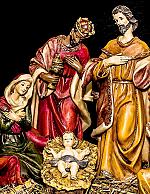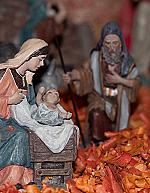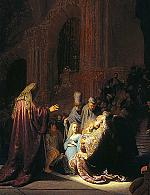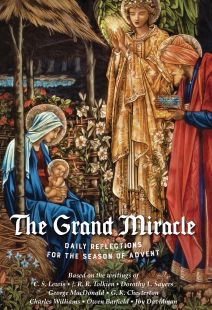Day 18. The glory of the Christmas night sky

[The morning star: Saturn, Moon, Venus and Mercury at Dawn—Mike Lewinski from Embudo, New Mexico [CC-BY-SA 2.0] / Wikimedia]
When they saw that the star had stopped, they were overwhelmed with joy. On entering the house, they saw the child with Mary his mother; and they knelt down and paid him homage. (Matthew 2:10–11, NRSV)
Far above . . . the night-sky was still dim and pale. There, peeping among the cloud-wrack above a dark tor high up in the mountains, Sam saw a white star twinkle for a while. The beauty of it smote his heart, as he looked up out of the forsaken land, and hope returned to him. For like a shaft, clear and cold, the thought pierced him that in the end the Shadow was only a small and passing thing: there was light and high beauty forever beyond its reach.
—J. R. R.Tolkien, The Lord of the Rings
We might not know exactly what the star looked like that led the Magi to Jesus 2,000 years ago. Was it a comet, perhaps a large one that drew the attention of many? Or maybe one so faint that only those who studied the night sky carefully even noticed it?
Even if we haven’t seen a comet, most of us have experienced the beauty of the night sky. We have also seen the morning star. Like the promise of the coming Messiah sung by angels to shepherds, the morning star heralds the approaching dawn. With that clear, cold, beautiful shaft of light, it sings: Morning is coming! The sun will rise soon!
Yet for all its beauty, it still comes after a long night. In the midst of deepest darkness, our eyes, drawn to the heavens, catch the glimpse of hope the morning star heralds—like Sam catching a glimpse of the star Eärendil even from the shadows of Mordor. So too did the Magi’s star appear over Bethlehem in the darkest of times. Israel languished in captivity, released from 70 years of slavery in Babylon only to fall into a much longer oppression by Rome. When would the longed-for Messiah come? When would the promised freedom appear? When could the people sing: Morning has come!?
The answer to that question came to shepherds watching their flock by night. In the midst of a seemingly hopeless situation, a sign of hope: A baby born in a manger. Good news. The sun has risen! Christmas Day is here!
So too, even in midst of the darkness of our age—the pain, sin, and sorrow that plague this world—we are reminded of hope. However dark our darkness feels, the shadow that breeds that darkness is just a vain and passing thing. The hope we greet on Christmas morning is the lasting reality.
PRAYER: Lord Jesus, let the hope of your promises and the beauty of the Christmas gospel smite our hearts even in the midst of whatever darkness surrounds us. Amen.
By Matthew Dickerson
[Christian History originally published this article in Christian History Issue #133+ in 2019]
Matthew Dickerson, a professor at Middlebury College, is the author of the Daegmon War fantasy series, narrative nonfiction The Voices of Rivers, and several books and essays about J. R. R. Tolkien and C. S. Lewis.Next articles
Day 20. The person of Christ
Sayers’s advice to focus on the person of Christ makes absolute sense.
Mark A. NollDay 21. The world in a stable
How could something “bigger than our whole world,” fit in a stable?
William O’FlahertyDay 22. A sword pierces the soul
Mary had to cope with the usual troubles of child raising and with danger, displacement—and prophecies.
Jennifer Woodruff TaitSupport us
Christian History Institute (CHI) is a non-profit Pennsylvania corporation founded in 1982. Your donations support the continuation of this ministry
Donate







